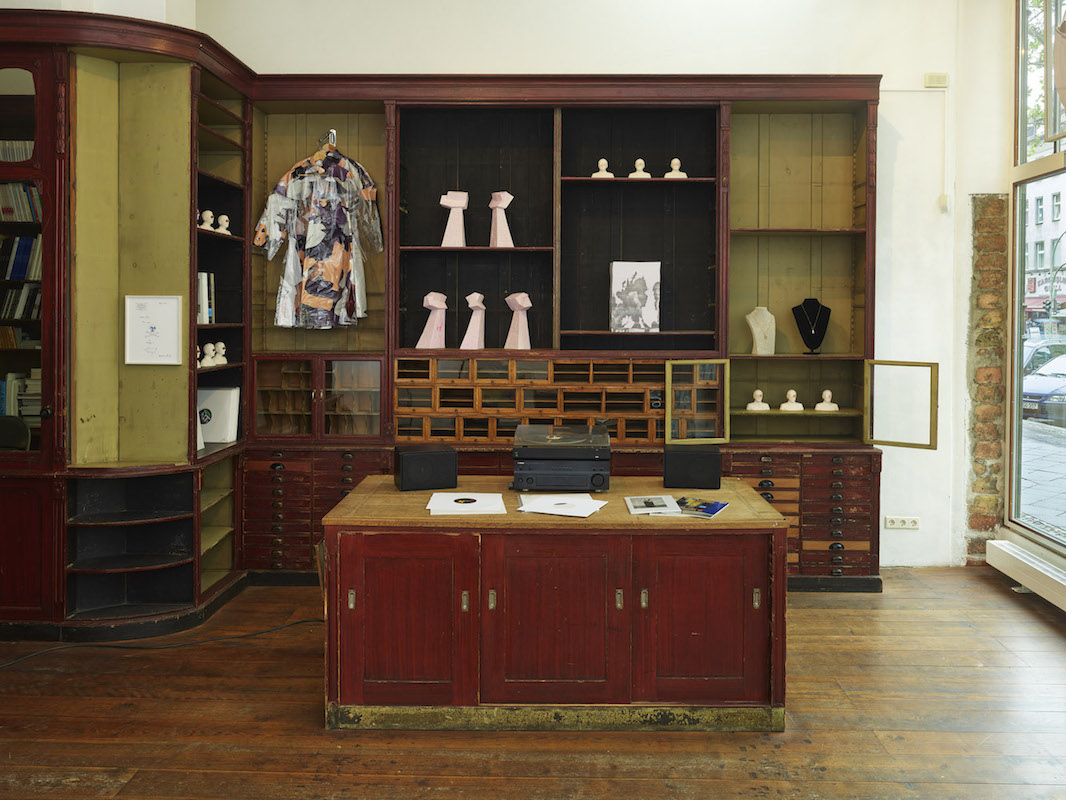
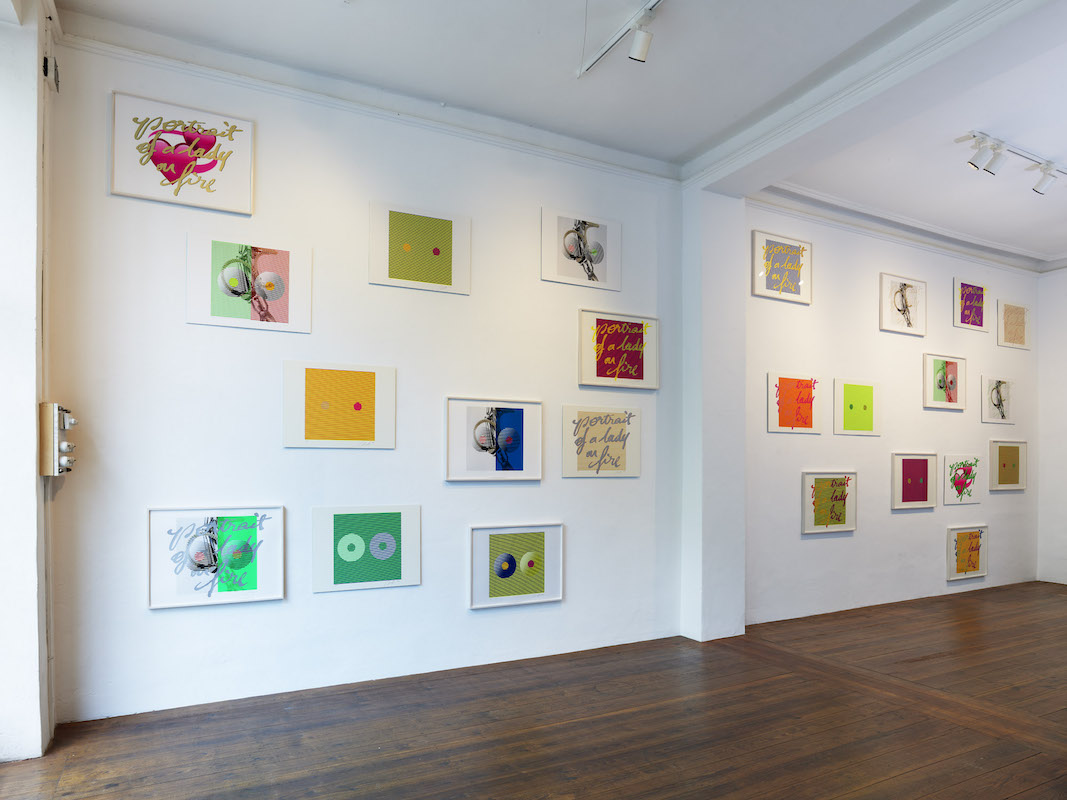
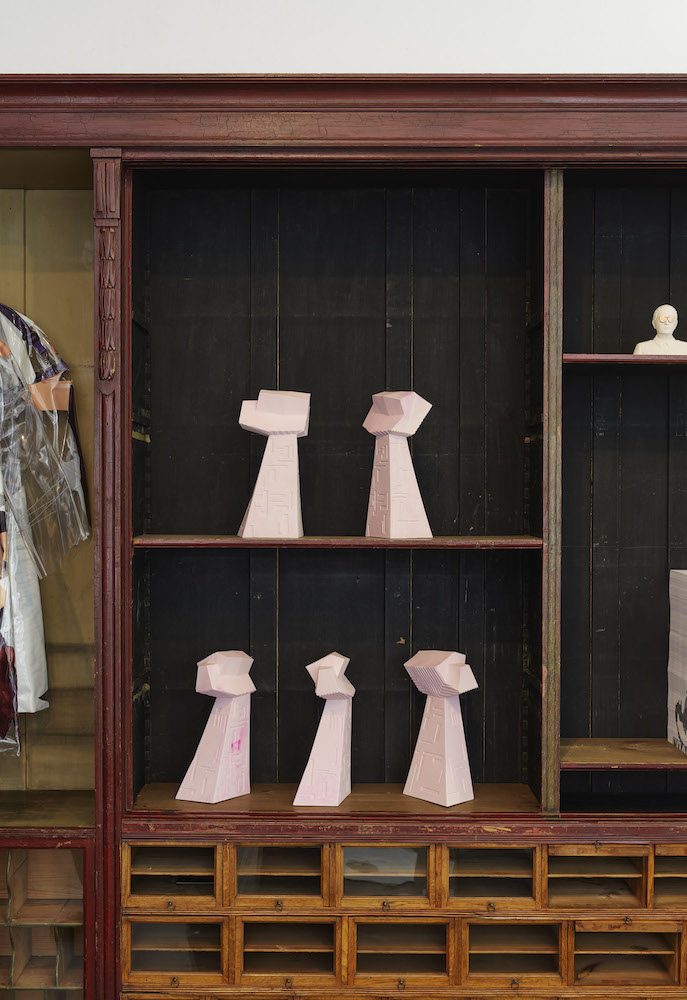
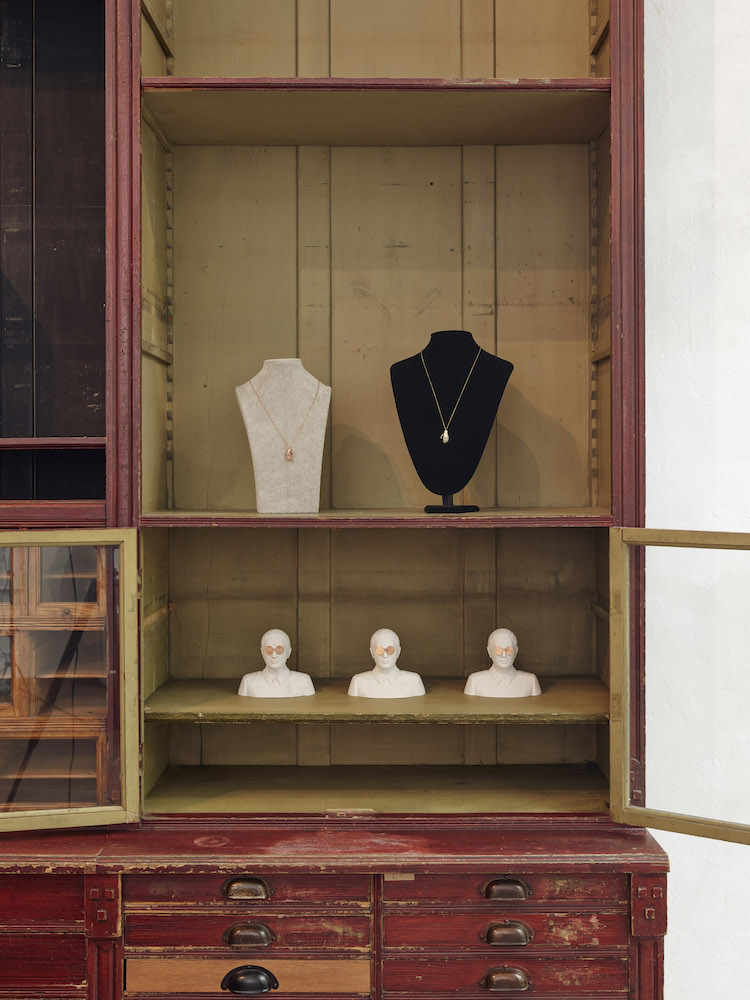
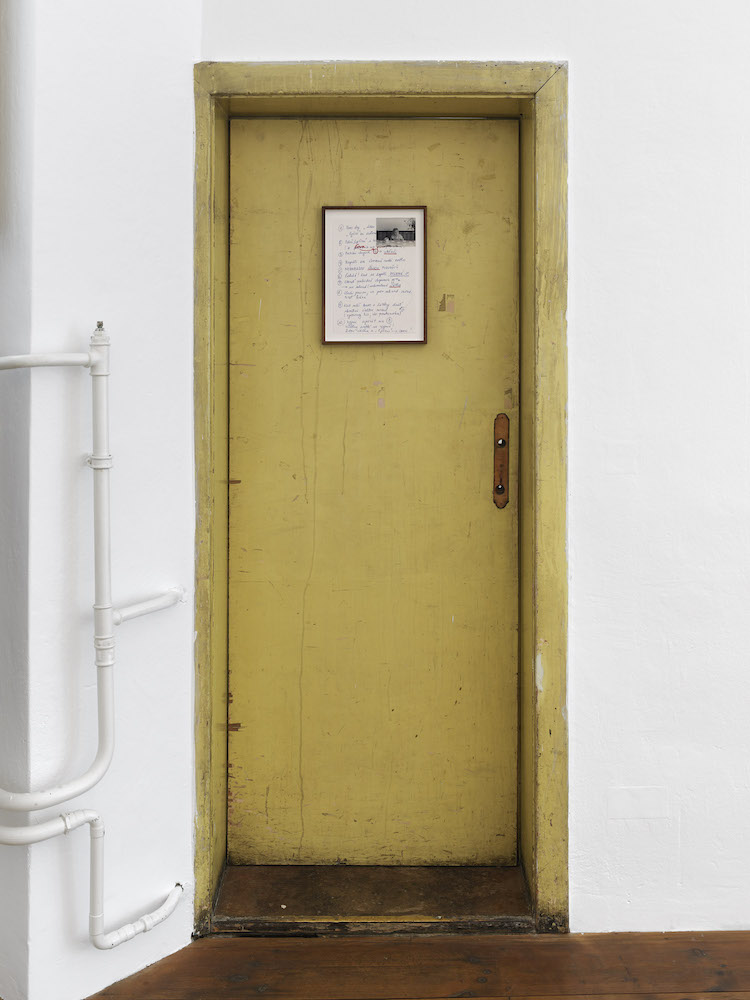
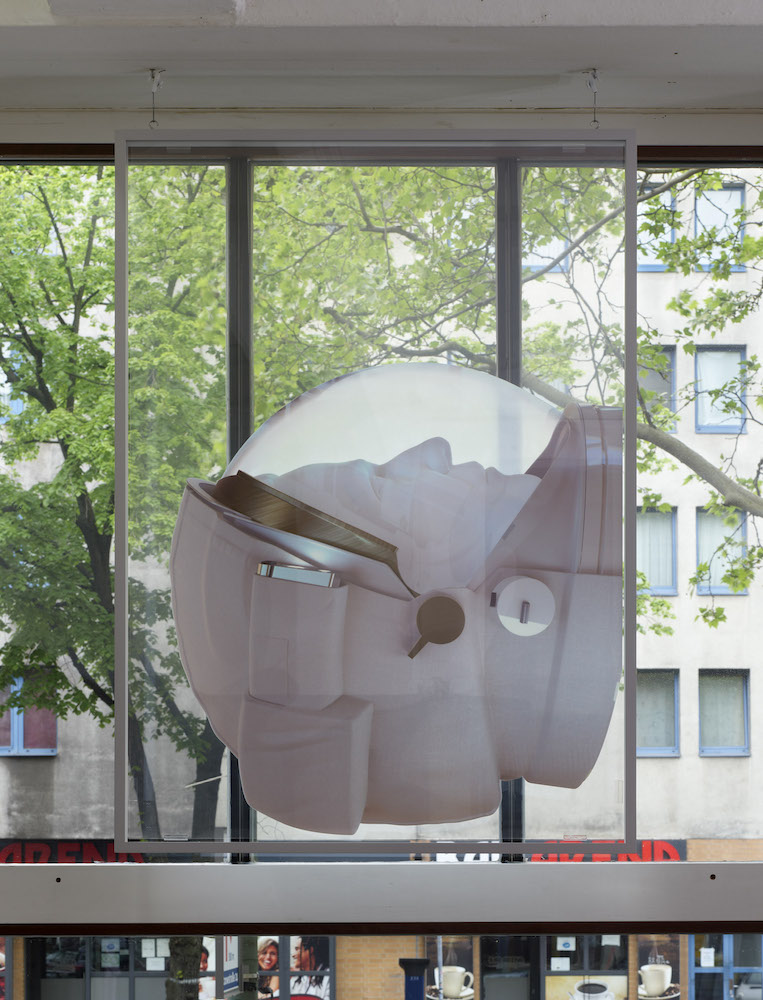
Aleksandra Domanović
Edicije
April 30 to June 27, 2020
Open by Appointment
Potsdamer Str. 97, 10785 Berlin
Reviews “Edicije”
Critics’ Picks Review in Artforum by Marisa Olson
Interview in BerlinArtLink by Elizabeth Schippers
If I sent you an image of the empty streets outside Klosterfelde Edition in Berlin, you could see it as a picture of a quiet early morning, or, the chilling effects of a worldwide pandemic lockdown. Reality, or the world we build with our minds, can transform from one moment to the next, like a book whose stories perpetually revise beneath an unchanging cover. To see is to perceive the world with the eyes; to perceive is to see matters in a particular way.
At the heart of “Edicije,” Aleksandra Domanović’s solo exhibition at Klosterfelde Edition, is a sustained interest in the friction, slippage, and bond between seeing and perceiving.
The remnants of Yugoslavian culture—the monuments, protagonists, and ideals forgotten since the country’s collapse—are often reanimated in Domanović’s practice. Bubanj Fist (2020) is an acrylic resin miniature of a six-meter tall public sculpture she made in Marrakech, itself a miniature of one of Ivan Sabolić 1963 raised-fist war-memorial sculptures in Niš, Serbia; The Cybernetic Hand from Belgrade (2020) is the world’s first multifunctional prosthetic hand and postwar Yugoslavian contribution to science—scaled down and rendered in precious metals to become a necklace pendant; and for 19:30 (2014), Domanović collected the various intro-themes to the country’s nightly televised newscast and asked DJs to transform them into dance remixes. In a number of pieces, the artist has given feminine features to Tito, the country’s former strongman president of thirty years. How we see something, how we perceive something—even history—is a matter of interpretation.
For “Edicije,” Domanović produced a set of new works that filters observations she’s made on a recent film called Portrait of a Lady on Fire (2020) through the political, ideological, and even sexual energies bound within the acts of seeing and perceiving. The film is ostensibly about a female painter commissioned to make a portrait of a women for a potential suitor to consider. We see the women see each other, and we wonder about how they perceive one another. It’s a study on the female gaze, the social contexts that proscribe it, and the sexual tension that steadily grows through it. How these women perceive each other changes the more they see each other. Portrait of a Lady on Fire is a manifestation of the power, love, romance, and control in a world without men.
The film also represents somewhat of a reversal of the Yugoslavian work. Instead of bringing historical reality into imaginative reinterpretations, the film represents fiction’s intrusion into reality. One of the lead actors, Adèle Haenel, is the former partner of the director, Céline Sciamma. The lesbian gaze that built the narrative flowed on and off screen. When Roman Polanski won best director at the César Awards in February this year, Haenel, repulsed that a man convicted of raping a thirteen-year old girl could win France’s top film award shouted, “Bravo, pedophilia,” as she marched out of the ceremony.
Domanović’s new silkscreen works, many featuring the movie’s title, employ an optical phenomenon called simultaneous contrast to extend the relationship between seeing and perceiving. Yellow text, for example, appears to be different hues when juxtaposed against red or blue lines. We are drawn in to test our eyes, to question our vision. How we perceive, these works seem to say, changes the more we see.
Text by Carson Chan
Click here for available artworks

